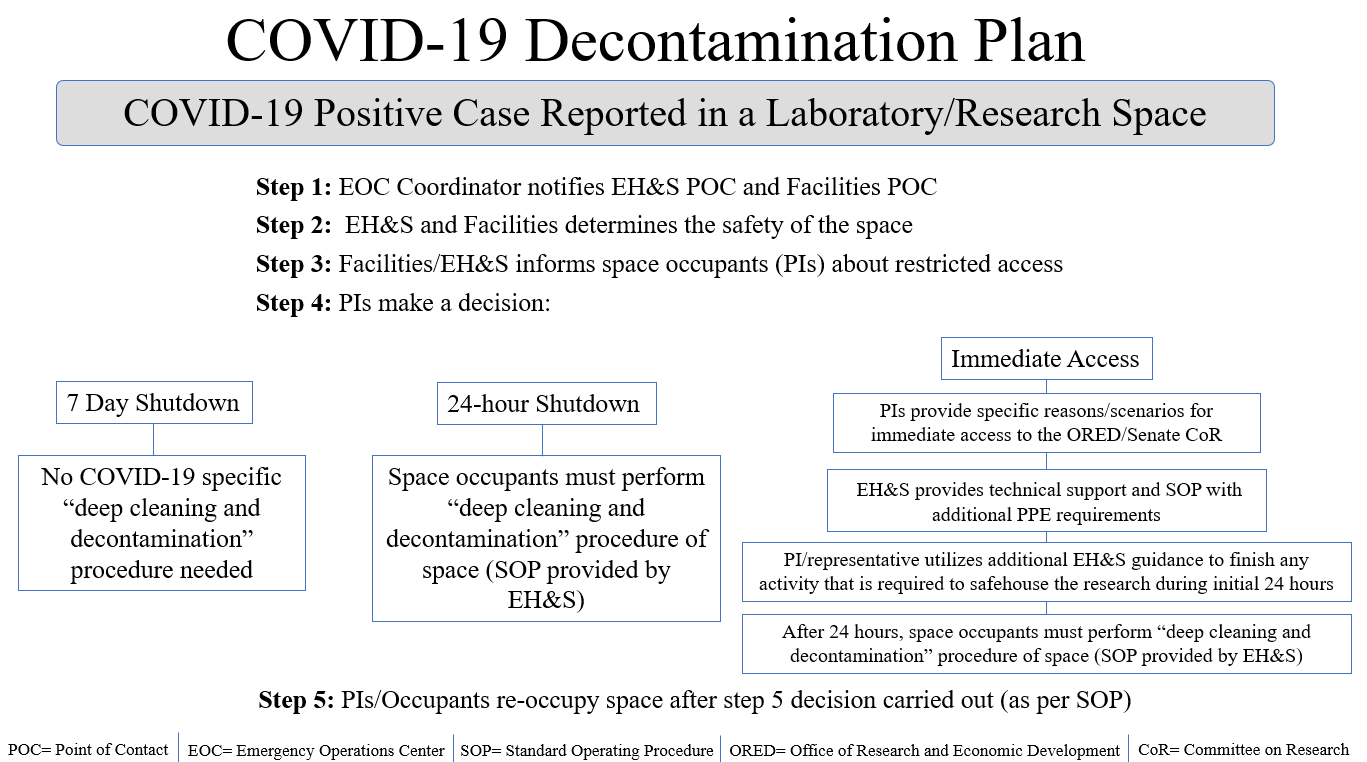
COVID-19 Response Procedures for Laboratories

Guidance Resources for Researchers
-
Safety Considerations for Laboratory Personnel:
-
Determine if lab space allows appropriate social distancing for research personnel (minimum of 6 ft).
-
If not, determine if research can be scheduled to have fewer researchers in the space at any one time. While fewer researchers in the space may reduce risks of infection, remember to avoid working alone in the lab.
-
Ensure the lab has a sign-in and out sheet posted to keep track of who has been in the lab, should contact tracing need to occur.
-
Researchers must wear gloves.
-
Researchers must cover their faces with a mask or cloth-covering unless they are in a private office or space.
-
Researchers must wipe down surface areas with 10% bleach, 70% alcohol or other acceptable disinfectant at the conclusion of lab work.
-
Researchers must thoroughly wash hands when exiting the lab.
-
Post lab signage that reminds researchers of the above requirements.
-
-
ABSA International: Considerations for Handling Potential SARS-CoV-2 Samples
-
BEI Resources - BEI was identified by the CDC to provide (free to qualified researchers) the virus and viral RNA to assay developers. BEI supports academia, industry and the global coronavirus research community with many SARS-CoV-2 related reagents including live and inactivated virus preparations, expression plasmids, proteins, peptide arrays, antibodies, etc. Please note, any researcher who is planning to receive any biological specimens from COVID-19 patients or any other materials associated with the SARS-CoV-2 virus must have IBC approval.
-
NIH: Interim Laboratory Biosafety Guidance for Research with SARS-CoV-2 and IBC Requirements under the NIH Guidelines - At the present time, SARS-CoV-2 best meets the definition of a Risk Group 3 (RG3) agent and the Institutional Biosafety Committee (IBC) considers the agent to be RG3 as a starting point in their risk assessments when reviewing research subject to the NIH Guidelines.
The RG classification may change over time as additional information about the virus, such as potential treatments or the development of an effective vaccine, becomes available.
Additional Resources
Office of Research and Economic Development COVID-19 Information
Campus Ready Faculty Information



